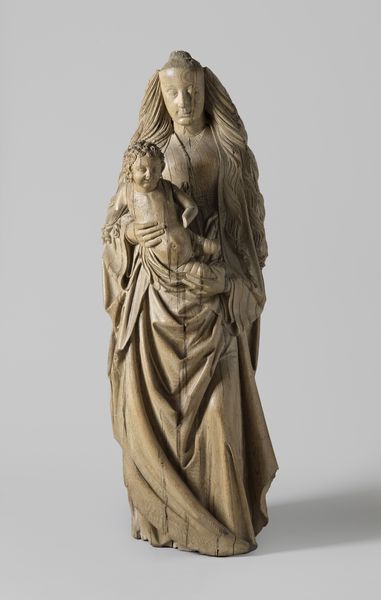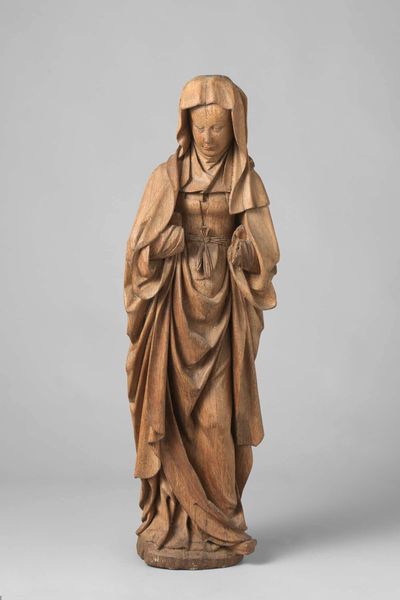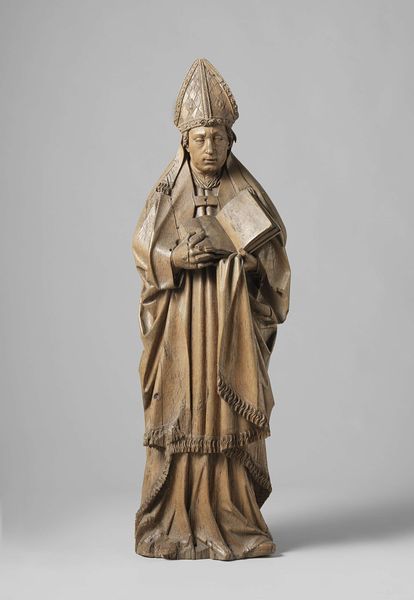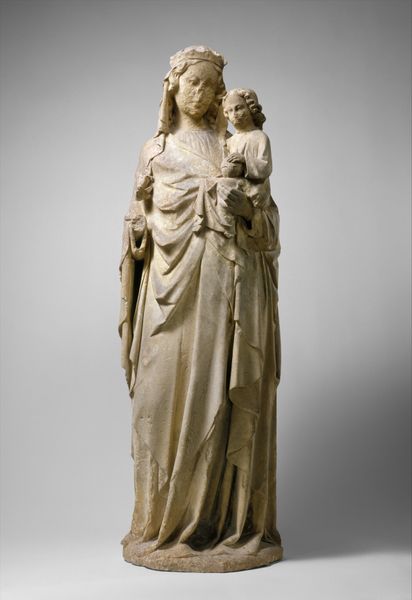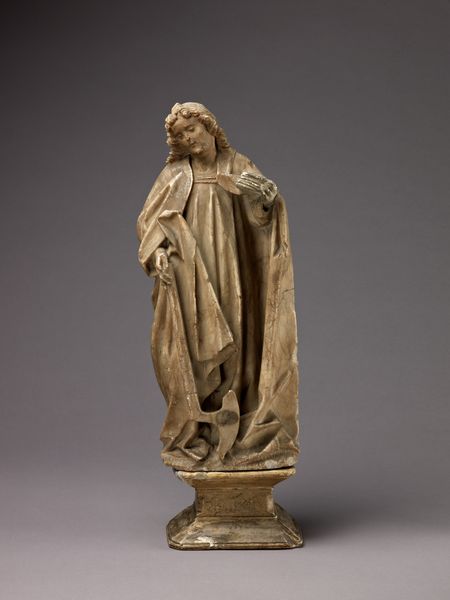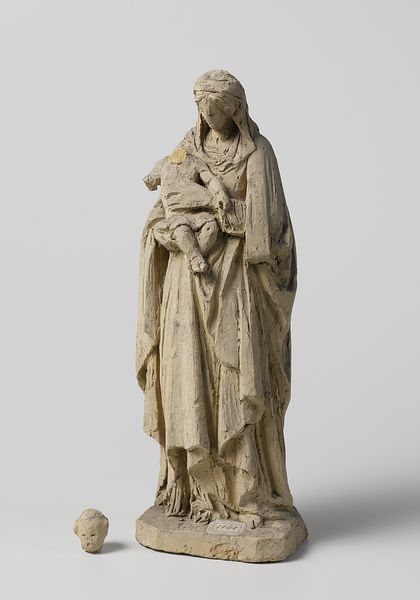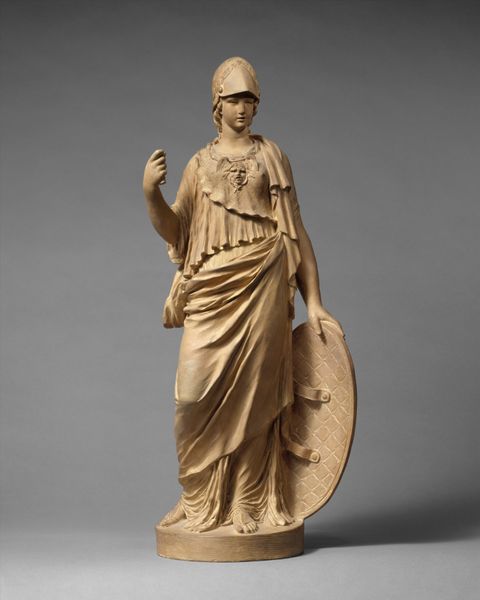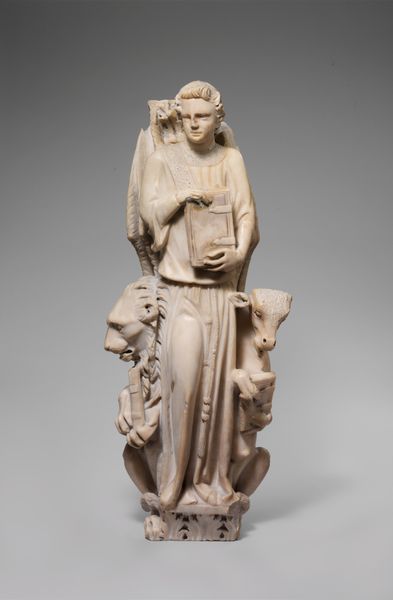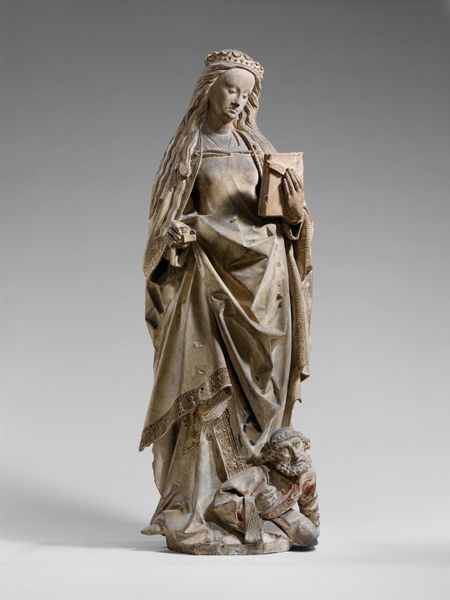
metal, sculpture
#
portrait
#
neoclacissism
#
metal
#
sculpture
#
figuration
#
sculpture
#
statue
Dimensions: height 31 cm, width 12 cm, depth 8 cm
Copyright: Rijks Museum: Open Domain
Curator: Here we have “Symbolisch vrouwenfiguur: Pictura,” a metal sculpture currently housed in the Rijksmuseum, crafted sometime between 1803 and 1868 by Louis Royer. It's a striking example of Neoclassical style, wouldn't you agree? Editor: Yes, the composition certainly evokes that cool, classical feel. What immediately strikes me is the figure’s austere expression, juxtaposed against the soft, draping fabric. There’s a powerful contrast there. What more can you tell us about the period's approach to idealised female forms, as seen in this statue? Curator: This piece falls squarely into the Neoclassical revival, echoing ancient Greek and Roman art. It's not just about aesthetics, though; it reflects the era’s embrace of reason, order, and virtue, mirroring the societal ideals then gaining prominence. Pictura, representing the art of painting, embodies the intellectual and artistic aspirations of the period. You notice how the drapery, pose and serene face all serve to convey a sense of dignity and timelessness. Editor: The "timelessness" you speak of also makes me consider what the artist elided in favor of what he chose to highlight. We see, essentially, an allegory: Art elevated to an abstract, even sterile, ideal. Where are the everyday artists represented? The women, and others of color, denied this symbolic representation? Curator: I take your point; the portrayal is undoubtedly idealized. In fairness to Royer and his contemporaries, Neoclassical art frequently employed symbolism to convey universal themes and ideas. This focus sometimes led to representations that can now appear exclusive, or perhaps detached from the realities of everyday experience, as you mentioned. But even in its exclusions, we learn something about who and what that society valued. Editor: Absolutely. And the choice of metal here—does that choice of medium carry further symbolic weight? Curator: Definitely. Metal lent itself to precision, durability and, in some ways, permanence. The work's monumentality connects with prevailing notions of what Art with a capital 'A' should aspire to: longevity, solemnity, and grandeur. Editor: Thank you. It prompts questions about whose stories get cast in "permanent" forms like this, doesn't it? Curator: It certainly does. Examining pieces like this gives us a view into not only the past, but the continuing and ever present narratives regarding symbolism, gender, and power.
Comments
No comments
Be the first to comment and join the conversation on the ultimate creative platform.
